
The demography of sub-Saharan Africa is one of the megatrends of the 21st century. Africa is the only world region projected to have strong population growth for the rest of the century. According to Pew Research, between 2020 and 2100, Africa’s population is expected to increase from 1.3 billion to 4.3 billion. These gains will come mostly in sub-Saharan Africa, which, even allowing for demographic transition, is expected to more than triple in population by 2100.
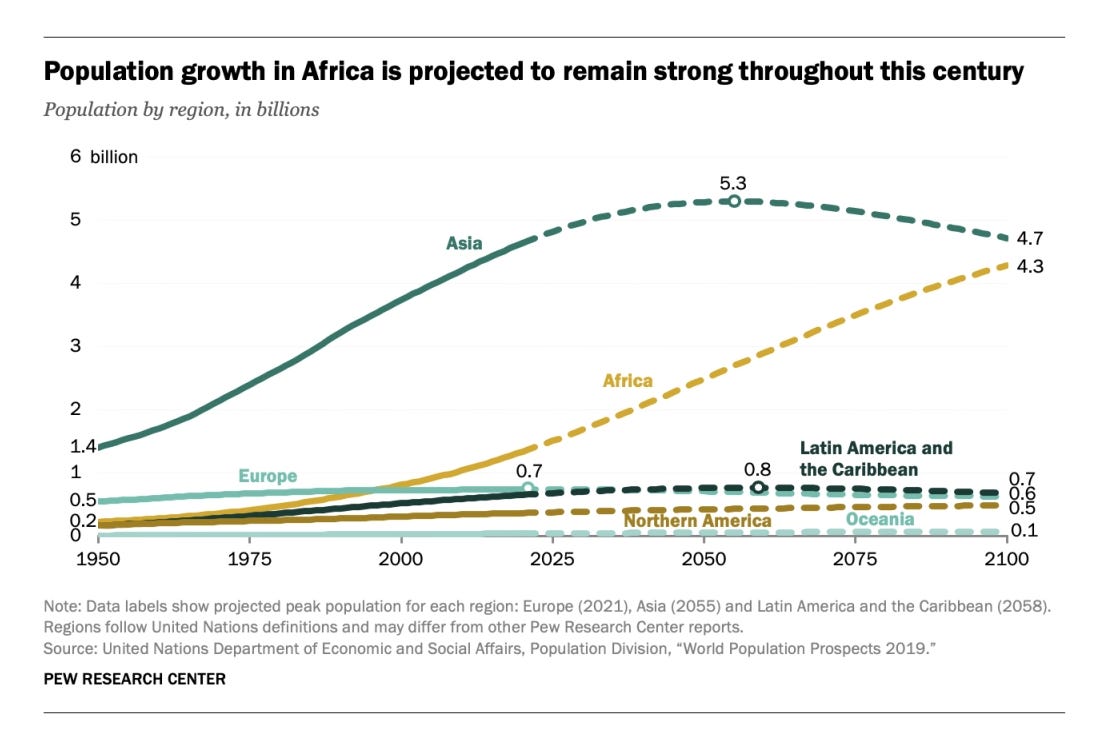
Source Pew Research
The Democratic Republic of the Congo, Tanzania, Ethiopia and Angola, along with one non-African country (Pakistan) are all major centers of population growth. But Nigeria is by far the most dramatic.

Conclusion: If we are to grasp the 21st century, we simply HAVE to integrate sub-Saharan Africa, and Nigeria, in particular, into our understanding of global affairs.
Concern: I could hardly be less well-equipped to understand these problems. I collect Nigeria charts pretty assiduously. But I am only too well aware that in this case, even more than others, “statistical reality” and facts on the ground are very different things. So, take this newsletter not as an insiders account of the “real Nigeria”, but as a review of “statistical Nigeria”. Let us call it, Nigeria-s. (PS: you could say the same about China-s. Or indeed USA-s. I’ll return to this in another newsletter)
Challenge for those who know better. I expect and hope to get schooled on this. I’m sourcing everything here to serious outlets. But, tell me what I am missing. Please!
Nigeria’s demographic drama
On current trends, Nigeria will surpass the U.S. as the third most populous country in the world in 2047.
Nigeria is expected to have 864 million births between 2020 and 2100, the most of any African country. The number of births in Nigeria is projected to exceed those in China by 2070.

Currently, total fertility in Nigeria is running at 5 live birth per woman, compared to the global average of 2.5. Given limited medical facilities and prevalent poverty, Nigeria’s women are in the frontline of a spectacular drama.
Today 20% of all global maternal deaths happen in Nigeria. 600 000 Nigerian women died in childbirth between 2005 and 2015 and there were no less than 900 000 maternal near-miss cases.
According to WHO a Nigerian woman has a 1 in 22 lifetime risk of dying during pregnancy, childbirth or postpartum/post-abortion; whereas in the most developed countries, the lifetime risk is 1 in 4900.
Urbanization
Between now and 2050, 35% of all urban population growth worldwide will be driven by India, China and Nigeria.
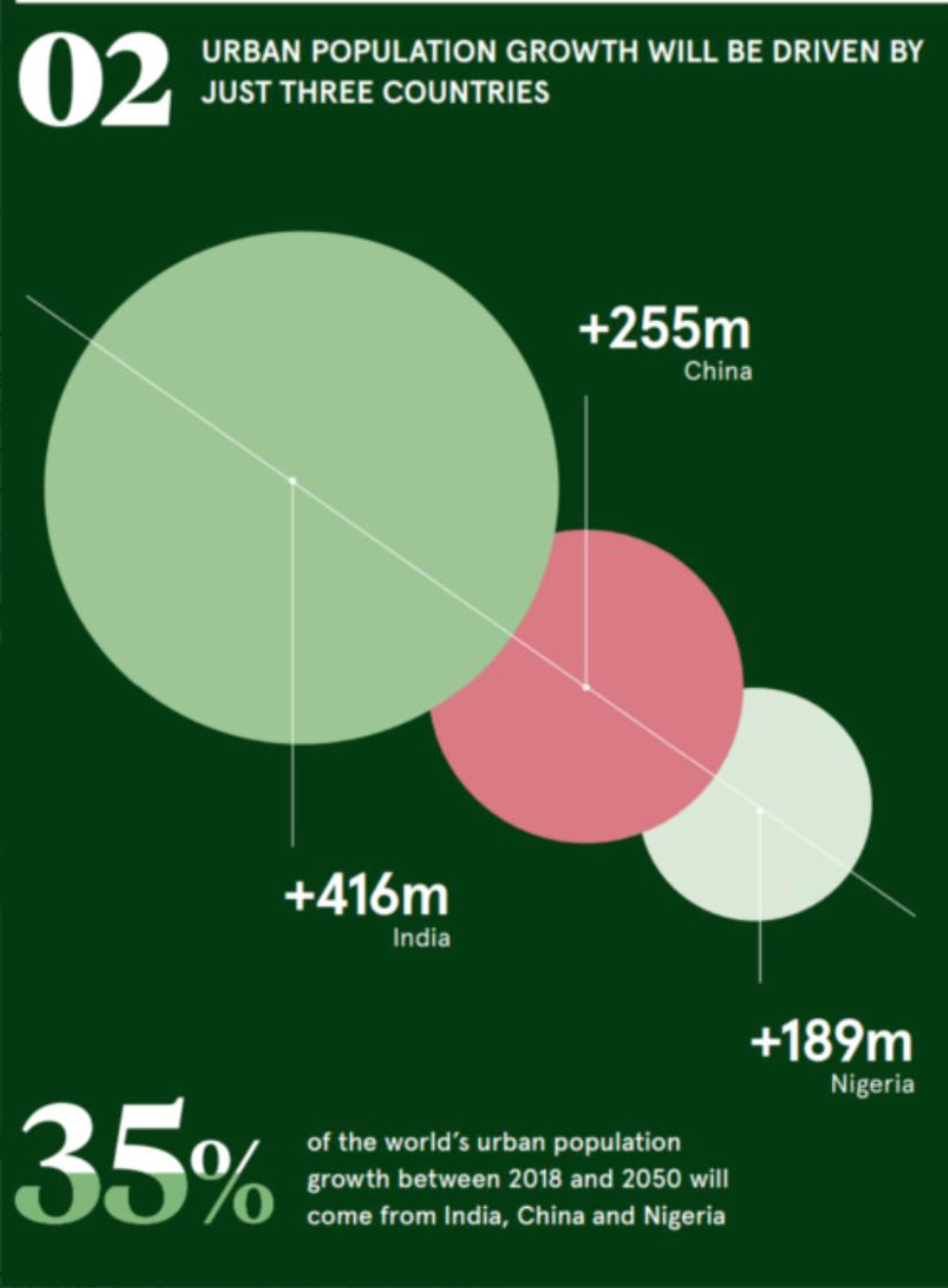
Source: Visual Capitalist
I don’t want to get into a sensationalist discourse of “planet of slums”, “Maximum city” etc. But, by all accounts, Lagos is a city like no other.
As David Pilling describes it in the FT, “Lagos, the federal capital until government functions shifted to Abuja in 1991, is arguably Africa’s most vibrant, creative and dynamic city. It is a centre not only of commerce and the country’s burgeoning high-tech industry but also of its creative industries, including music, fashion and the Nollywood film industry. Like India’s Mumbai, that makes it a city of dreams. Each day, thousands of people arrive from poorer parts of the country attracted by an economy bigger than that of Ethiopia, a country of 110m people. The city’s expansion has been almost entirely unplanned. In 1960, at Nigeria’s independence, Lagos had just 200,000 people. More than half a century later it has grown 100-fold to around 20m making it one of the top ten most populous cities in the world. By 2040, that could hit 30m.”
200k -> 20 m in 60 years. Those numbers speak for themselves.
A Poor Economy
In its interactions with world economy Nigeria’s economy, the largest in Sub-Saharan Africa, is dramatically undiversified. It lacks what economic geographers call complexity. One commodity, oil, dominates Nigeria’s formal economy and its export trade.
If you take Nigeria’s GDP in 2017 as $400bn – a big if – Nigeria’s trade with the rest of Africa accounts for only $7bn in 2017. That is less than 2 percent and that is on the assumption that GDP is not understated. That makes is comprehensible that Nigeria resorted to closing land border to the movement of goods to stop smuggling.
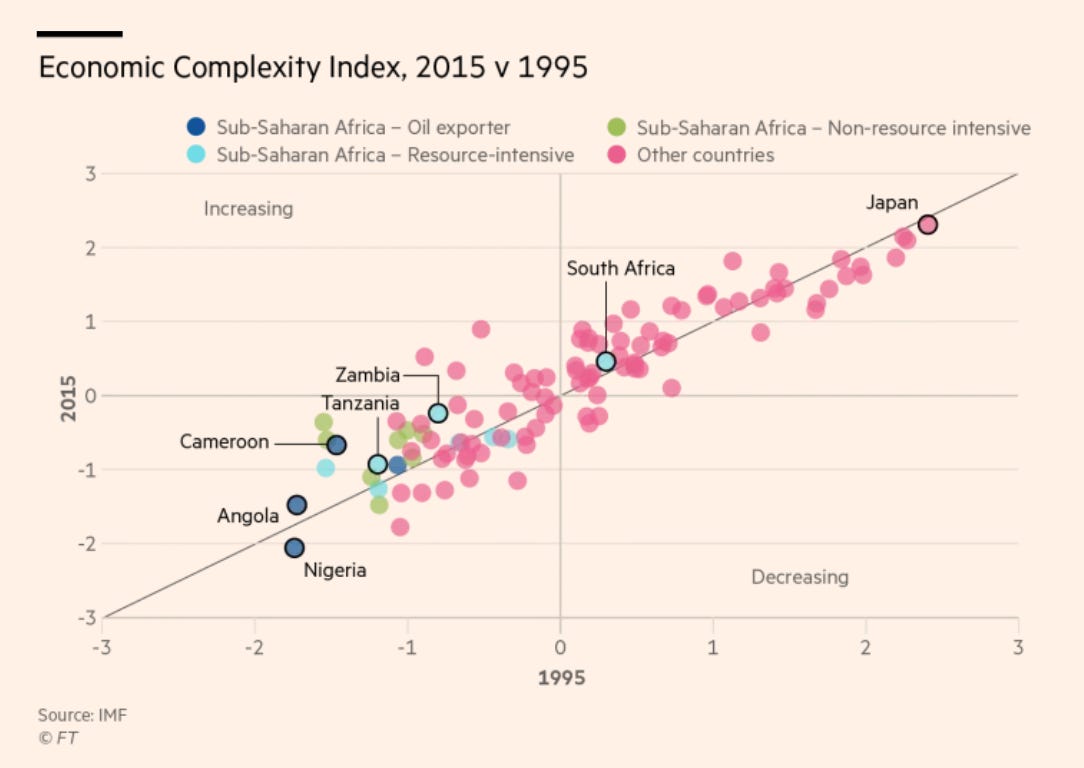
Source: FT
The oil industry is the main source of fiscal revenue, which makes for an exceptionally narrow tax base.

Falling Behind
Needless to say, none of this is a recipe for economic success. The World Bank recently produced this comparison of Nigeria and Indonesia’s economic development over the last half century.
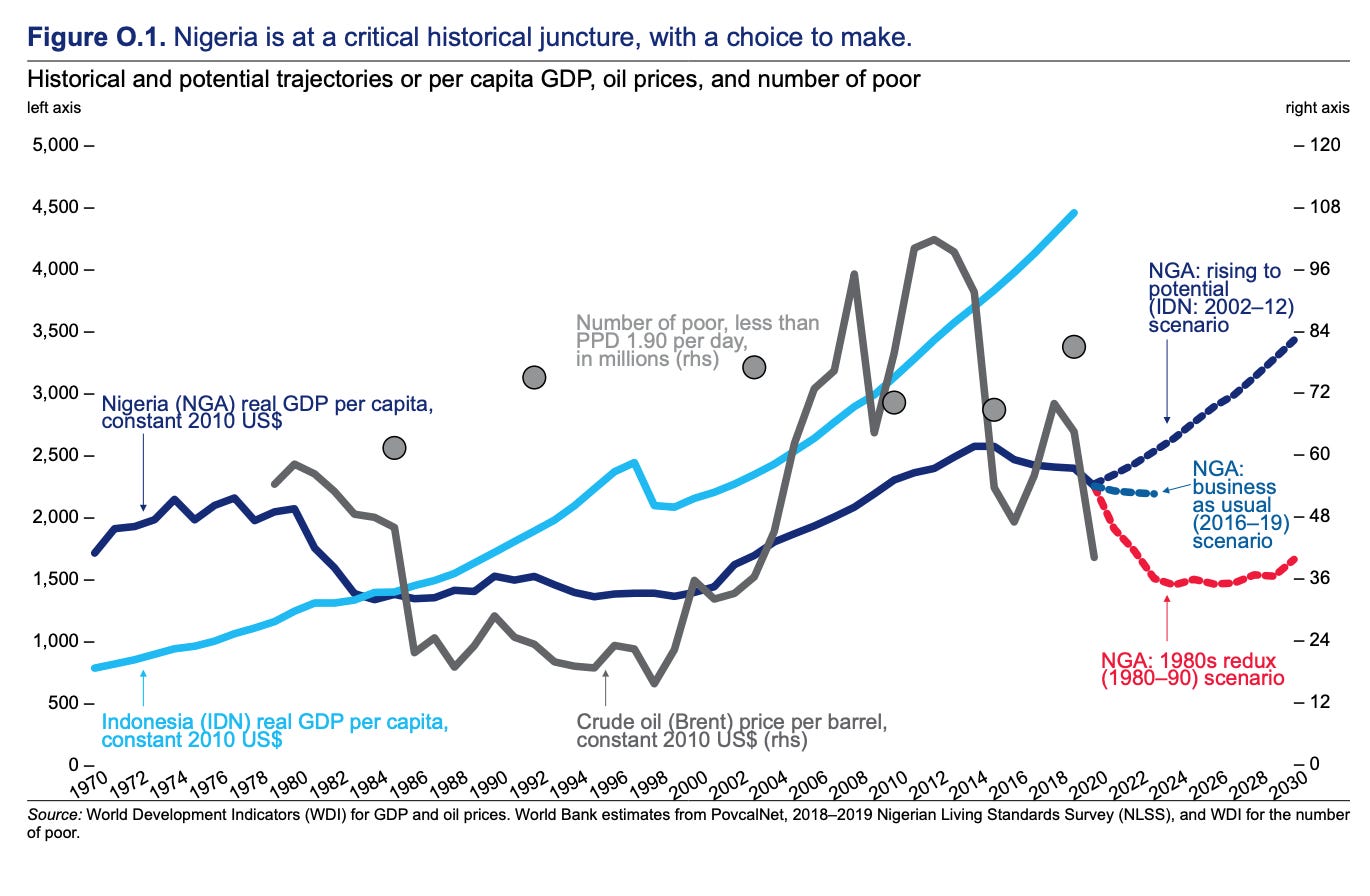
Source: World Bank
In 1970 Nigeria’s gdp per capita was twice that of Indonesia. Today that economic balance is flipped. Indonesia is now a rapidly growing middle-income country. Nigeria is not.
Nigeria has fallen behind not just relative to Asian competition. It also lags its African competitors too. Ethiopia, in particular, has demonstrated how high investment can drive growth. (Will try to do a similar exercise to this on Ethiopia soon).

Source: FT
Energy Starved Oil Exporter
For lack of investment, Nigeria, a large oil exporter cannot supply its own population with power.
As Reuters reports, currently Nigeria produces huge quantities of crude oil but has no adequate refinery capacity. It has to import petrol and suffers regular fuel shortages. There is a promise that a $12bn refinery will soon open that should produce fuel by 2022.
International comparisons of Nigeria’s energy poverty are mind-boggling.
China’s population of 1.4B ppl use 6500 Billion KWh each year
India: 1.4B ppl use 1500 Billion KWh
Nigeria: 200M ppl use 28 Billion KWh
As @70sBachchan points out, to handle power surges, China disconnects more wind electricity than all Nigerians use!
200 m people generating a GDP $1.1 trillion PPP have only 5.3 GW of large scale power stations reliably connected to grid = Congo/Afghanistan level.
That Nigeria’s economy functions at all is credit to the endless capacity for improvisation displayed by its population. It is testament to that that Nigeria has amongst highest GDP per GW of grid power in world! In other words the system is grotesquely inefficient, but Nigerians make the most out of whatever stable on-grid electricity supply they can get.
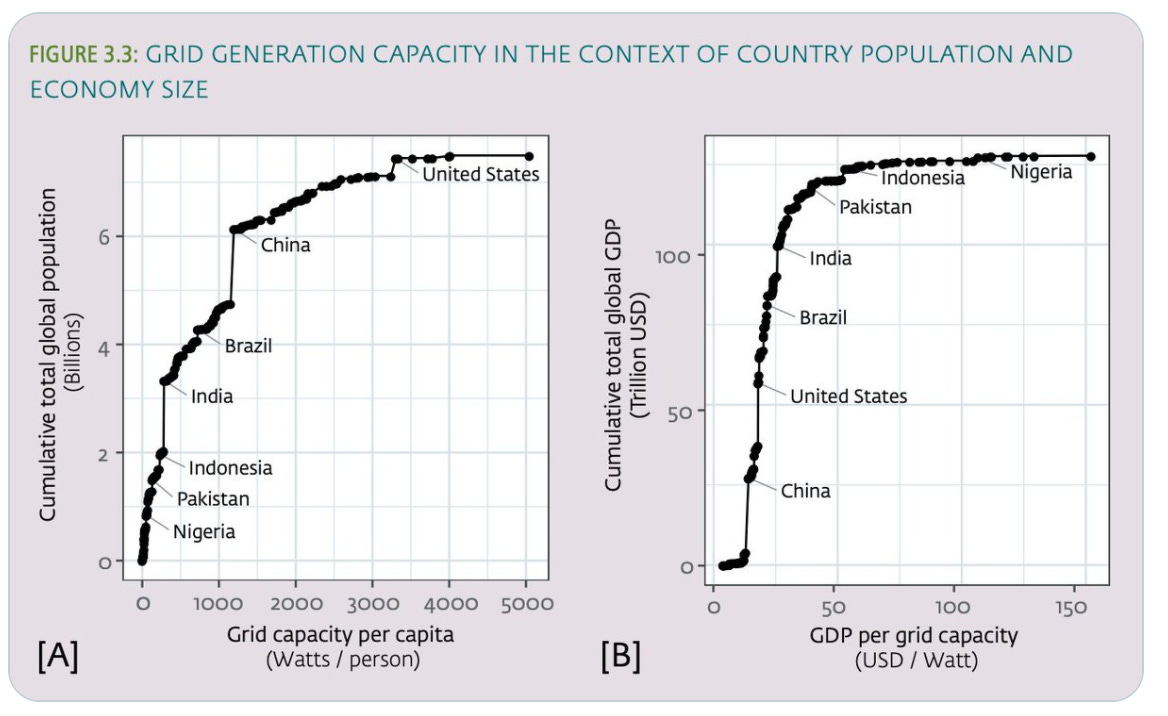
Source: Dirty Power
For the rest they rely on massed banks of inefficient, polluting, but reliable off-grid diesel generators. Though generators are ubiquitous throughout the world wherever the grid is fragile (more on this in a subsequent post), nowhere is more dependent in proportional terms on “backup” power than Nigeria/West Africa.
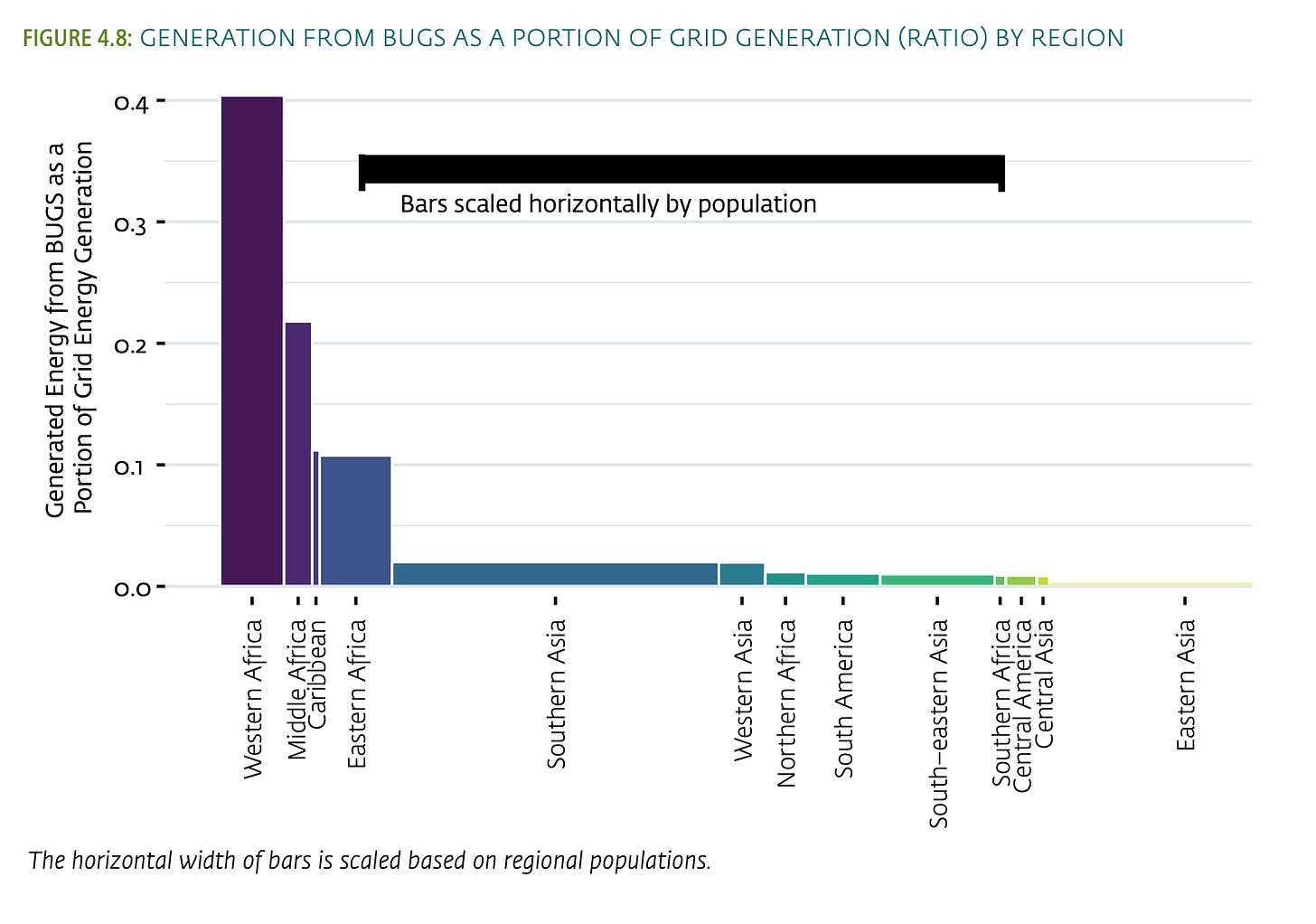
Source: Dirty Power
No Work
Given the huge population growth, unemployment is a chronic problem.
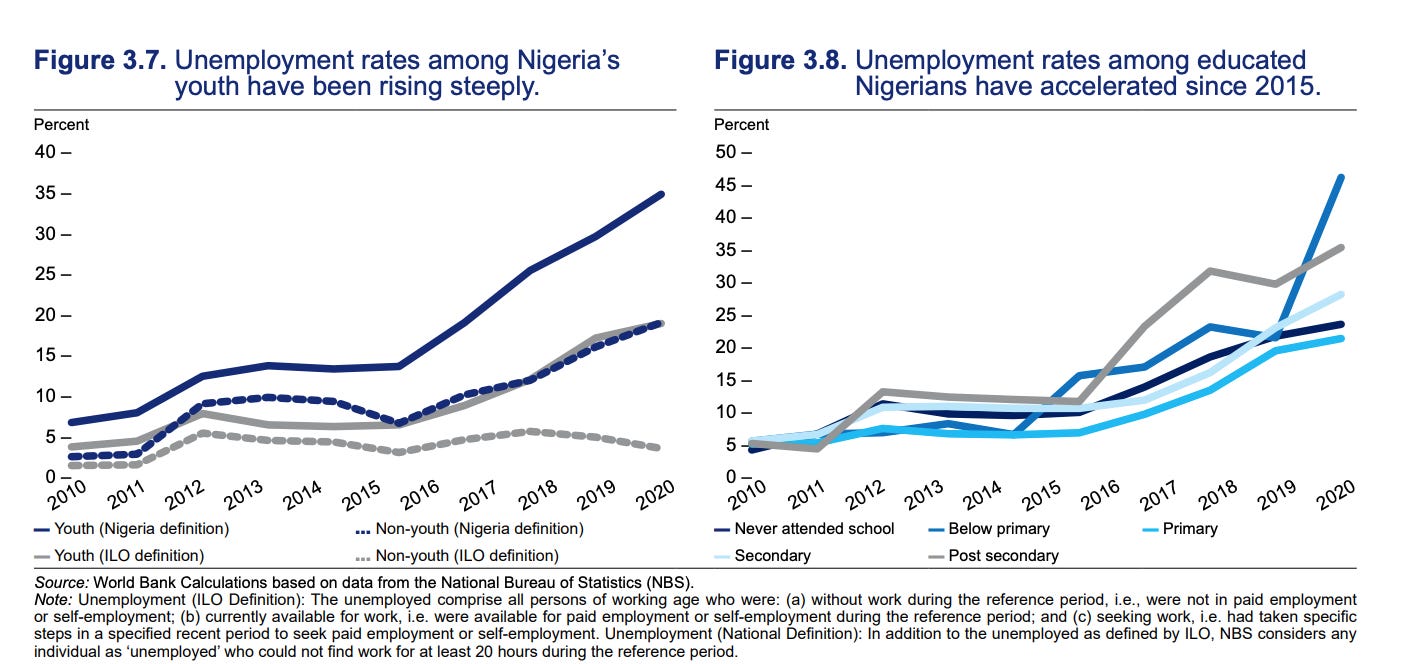
Source: World Bank
Nigerians get by in an “underground”, “hidden”, “shadow” or “grey”, economy that by some estimates accounts for 50-60 percent of total economic activity.
Poverty
But for all the dynamism and drive, for all the success that many achieve, some 94m people in Nigeria live on less than $1.90 a day, more than in any other country in the world.
By 2030 a quarter of all very poor people on the planet will be Nigerian, predicts @worlddatalab.
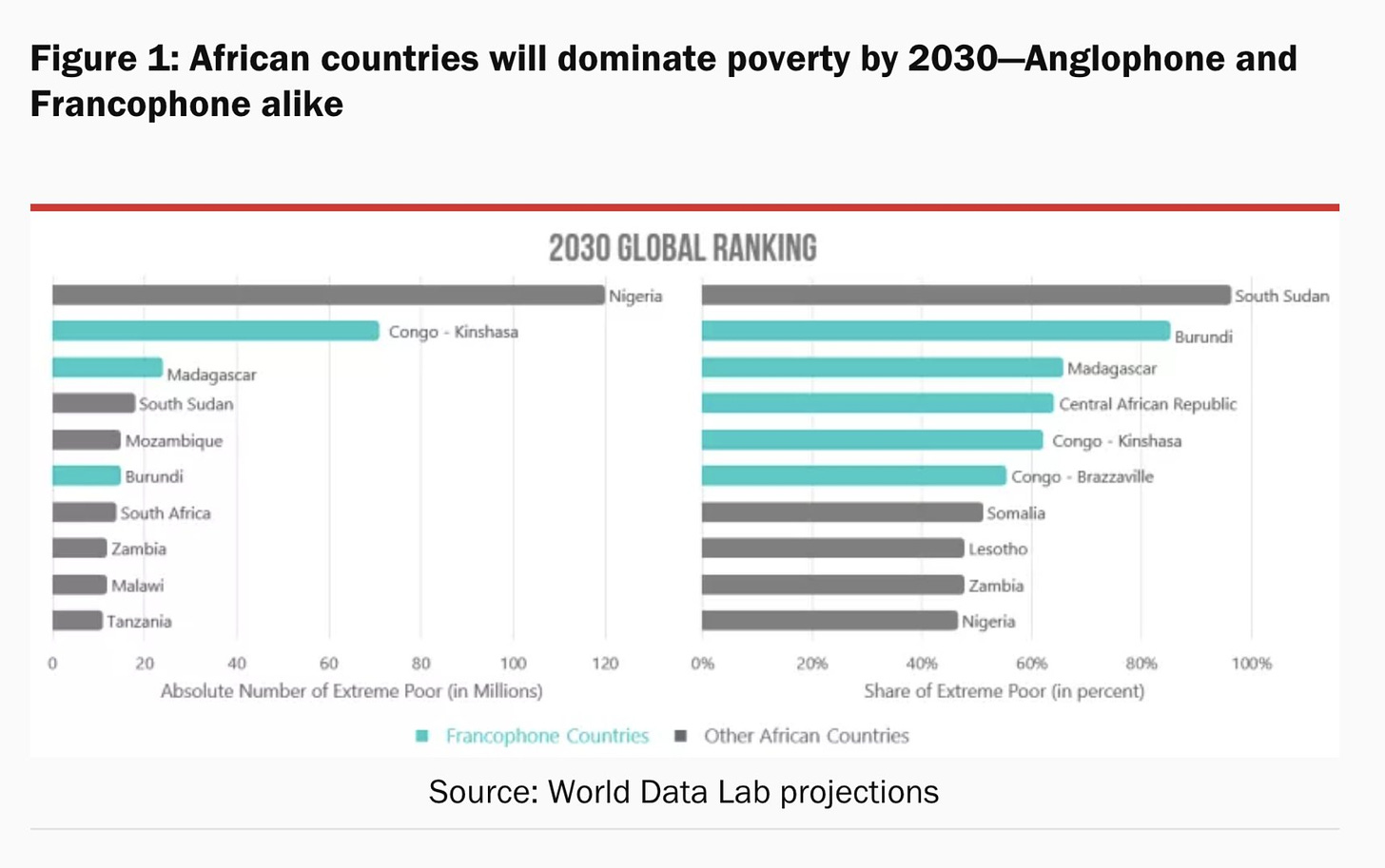
Source: Brookings
Migration
Faced with stark circumstances, folks look for alternatives. By 2018 more than half of Nigerians reported that they wanted to leave their country with educated Nigerians expressing the strongest desire to emigrate.

Source: World Bank
Between 1990 and 2019 the Nigerian diaspora surged from 0.5 to 1.5 million with the US and the UK becoming new homes for one third of the migrants.
Many cannot find a legal route and resort to paying extortionate fees to people smugglers.

Not for nothing the most World Bank Nigeria Development Update December 2020 concludes with a section on: “Making the most of young Nigerians’ economic potential: The case for more and better managed international labor migration from Nigeria”
